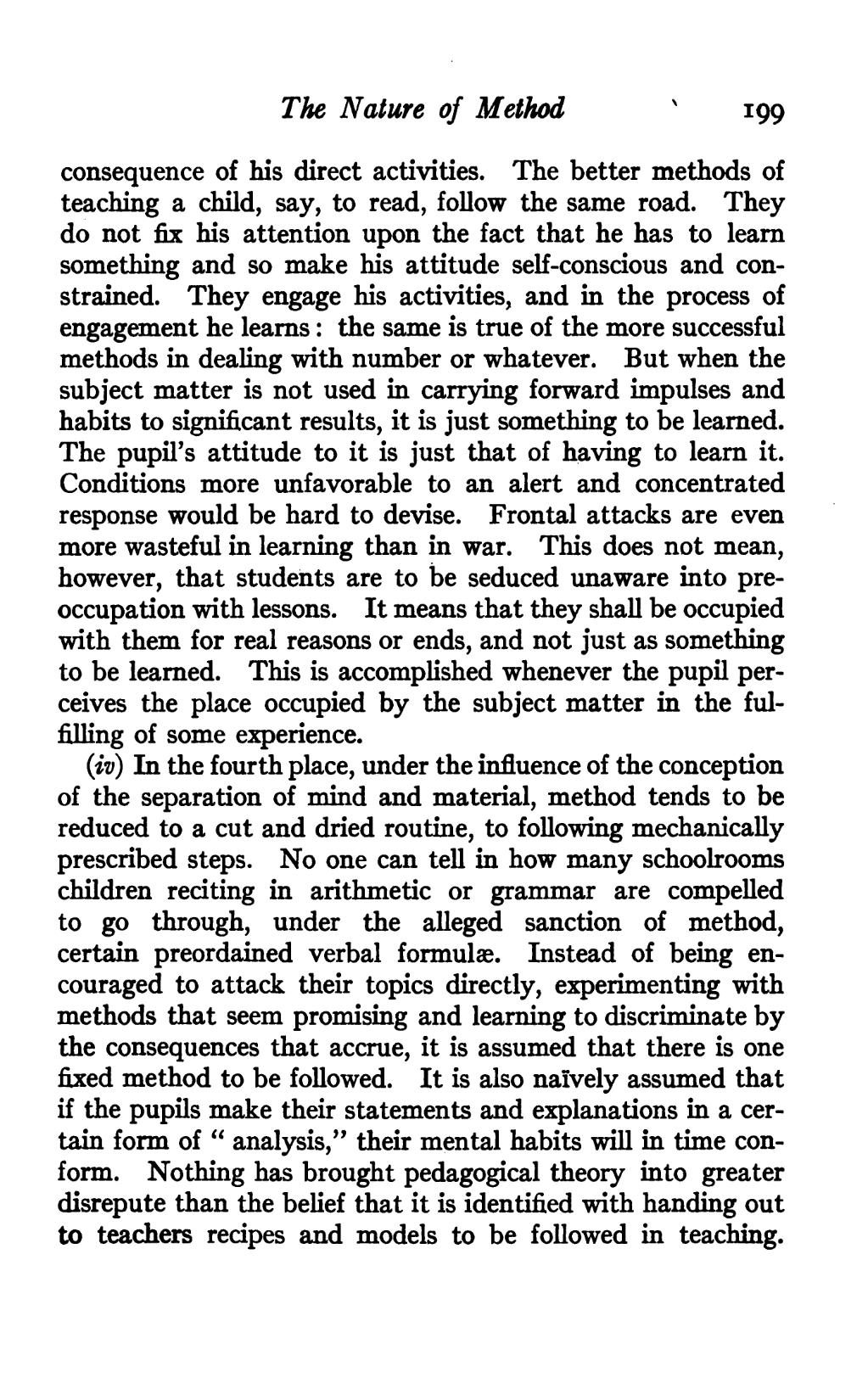consequence of his direct activities. The better methods of teaching a child, say, to read, follow the same road. They do not fix his attention upon the fact that he has to learn something and so make his attitude self-conscious and constrained. They engage his activities, and in the process of engagement he learns: the same is true of the more successful methods in dealing with number or whatever. But when the subject matter is not used in carrying forward impulses and habits to significant results, it is just something to be learned. The pupil's attitude to it is just that of having to learn it. Conditions more unfavorable to an alert and concentrated response would be hard to devise. Frontal attacks are even more wasteful in learning than in war. This does not mean, however, that students are to be seduced unaware into preoccupation with lessons. It means that they shall be occupied with them for real reasons or ends, and not just as something to be learned. This is accomplished whenever the pupil perceives the place occupied by the subject matter in the fulfilling of some experience.
(iv) In the fourth place, under the influence of the conception of the separation of mind and material, method tends to be reduced to a cut and dried routine, to following mechanically prescribed steps. No one can tell in how many schoolrooms children reciting in arithmetic or grammar are compelled to go through, under the alleged sanction of method, certain preordained verbal formulæ. Instead of being encouraged to attack their topics directly, experimenting with methods that seem promising and learning to discriminate by the consequences that accrue, it is assumed that there is one fixed method to be followed. It is also naïvely assumed that if the pupils make their statements and explanations in a certain form of "analysis," their mental habits will in time conform. Nothing has brought pedagogical theory into greater disrepute than the belief that it is identified with handing out to teachers recipes and models to be followed in teaching.
